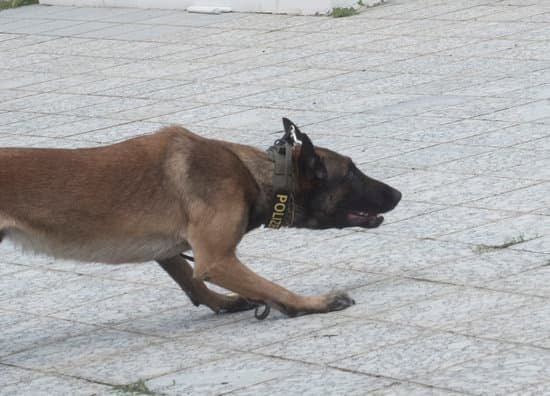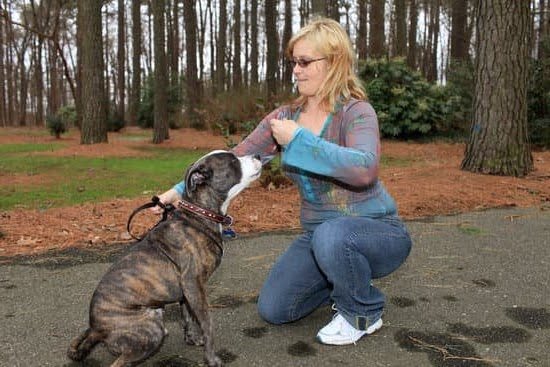Proper dog training is essential for the well-being and behavior of our furry companions. Not only does it ensure that they are well-behaved and obedient, but it also plays a significant role in their overall happiness and quality of life. In this article, we will delve into the world of dog training and explore the various methods used by professional trainers to shape our dogs’ behavior.
Effective dog training offers numerous benefits for both the owner and the community. A trained dog is less likely to engage in destructive behaviors such as chewing on furniture or excessive barking, making them more pleasant to have around the house.
Additionally, a well-trained dog is safer to be around, reducing the risk of accidents or aggressive behavior towards other animals or people. By instilling good manners and obedience in our canine companions, we create a harmonious environment where they can truly thrive.
To successfully train a dog, it is crucial to understand their natural instincts and tendencies. By appreciating basic canine behavior and psychology, trainers can tailor their methods to suit each individual dog’s needs effectively. Dogs have an innate desire to please their owners, making positive reinforcement one of the most effective training techniques. With patience, consistency, and the right approach, even complex behaviors can be learned by our furry friends.
In the following sections of this article, we will dive deeper into understanding canine behavior, explore different training methods employed by professionals, outline essential commands and behaviors that trainers focus on teaching, discuss socialization and obedience training techniques, highlight specialized training programs for working dogs, stress the importance of consistency and reinforcement in training approaches, and ultimately build a thriving bond with our trained dogs.
Stay tuned as we unravel the secrets behind successful dog training.
Understanding Canine Behavior
Understanding the behavior of dogs is essential for effective dog training. Dogs, as descendants of wolves, have certain natural instincts and tendencies that shape their behavior. By understanding these behaviors, trainers can tailor their training methods to effectively communicate with dogs and modify their behavior.
One fundamental aspect of canine behavior is their social nature. Dogs are pack animals, meaning they have an innate need to live in a structured social group. They form hierarchical relationships within the pack, with each member having a specific role and position. This instinctual need for social interaction and structure is important to consider when training dogs.
Another significant aspect of canine behavior is their ability to read human body language and cues. Dogs are highly perceptive creatures and can pick up on subtle signals from humans. For example, they can recognize facial expressions, tone of voice, and body movements. Trainers utilize this ability by using consistent verbal cues and hand signals during training sessions.
One popular methodology in understanding canine behavior is through the study of dog body language. Dogs communicate primarily through body postures and gestures. By observing a dog’s body language, trainers can gain insights into their emotional state or level of comfort in different situations. Understanding these visual cues helps trainers modify their approach or environment to create a more positive learning experience for the dog.
Different Training Methods
When it comes to training dogs, there are various methods employed by professional dog trainers. These methods play a crucial role in shaping a dog’s behavior and determining their responses to different situations. It is essential for dog owners to understand the different training techniques available so they can choose the most suitable approach for their furry companions.
One popular training method is positive reinforcement. This technique involves rewarding dogs with treats, praise, or other forms of positive reinforcement whenever they exhibit the desired behavior. By associating good behavior with rewards, dogs are motivated to repeat these actions in the future. Positive reinforcement is known for its effectiveness in creating a strong bond between the owner and the dog and promoting a positive learning experience.
Another commonly used training method is clicker training. This technique utilizes a small handheld device called a clicker that emits a distinct sound when pressed. The click sound serves as an immediate marker to signal correct behavior, which is then followed by a reward. Clicker training helps dogs quickly understand desired behaviors and reinforces positive associations.
In addition to these methods, there are other techniques such as leash training, crate training, and aversive training that trainers may use depending on the needs of the dog and their specific behavior issues. It is important for trainers to assess each dog individually and determine which method will be most effective in addressing their particular challenges.
| Training Method | Description | Pros | Cons |
|---|---|---|---|
| Positive Reinforcement | Rewarding desired behavior with treats or praise. | – Creates positive associations
| – May not be suitable for all dogs or behaviors |
| Clicker Training | Using a clicker to mark desired behavior and provide rewards. | – Offers precise timing
| – Requires consistent and accurate timing by the trainer |
| Aversive Training | Discouraging unwanted behavior through discomfort or punishment. | – Can provide immediate correction
| – Has potential to damage the bond between owner and dog
|
It is important to note that no single training method is universally suitable for all dog breeds or individual dogs. The temperament, age, and specific needs of each dog should be considered when selecting a training approach. Consulting with a professional dog trainer can help owners navigate the various methods available, ensuring that training sessions are effective, safe, and tailored to their furry friend’s unique requirements.
Importance of Professional Dog Trainers
Professional dog trainers play a crucial role in ensuring the success of dog training efforts. While some pet owners may attempt to train their dogs themselves, seeking assistance from a professional trainer can greatly enhance the training experience and ultimately result in a well-behaved and obedient pet.
One of the primary advantages of working with a professional dog trainer is their expertise and experience in understanding canine behavior. These trainers have extensively studied dog psychology and are equipped with the knowledge to identify behavioral issues and provide effective solutions.
They understand that every dog is unique and requires individualized training methods tailored to their specific needs and temperament. With their specialized knowledge, professional trainers can create customized training plans that address specific behavior problems or focus on teaching essential commands.
Moreover, professional dog trainers possess hands-on experience working with various breeds and temperaments, making them highly skilled at handling different types of dogs. They are familiar with breed-specific tendencies and instincts, allowing them to adapt their training techniques accordingly. This expertise is especially valuable when it comes to resolving behavior issues or addressing problematic behaviors common in certain breeds.
Working with a professional trainer also provides accountability for both the pet owner and their furry companion. Trainers keep pet owners motivated by setting clear goals, tracking progress, and offering ongoing support throughout the training process. They provide guidance on proper handling techniques, reinforcement strategies, and troubleshooting advice when challenges arise.
Basic Commands and Behavior Training
In order to have a well-behaved and obedient dog, it is important to focus on teaching them basic commands and behavior training. These foundational skills not only provide structure and discipline for your dog, but they also contribute to their overall well-being and safety.
List of Essential Commands
- Sit: Teaching your dog to sit on command is one of the most basic and fundamental commands. It helps establish control and calmness in various situations.
- Stay: The “stay” command is crucial for maintaining control in potentially dangerous situations or when you want your dog to remain in one place for an extended period of time.
- Come: Having a reliable recall command is essential for ensuring your dog’s safety. Teaching them to come when called can prevent accidents or dangerous encounters.
- Heel: The “heel” command is used during walks or when your dog needs to walk calmly by your side without pulling on the leash.
The Purpose and Benefits of Commands
Commands serve multiple purposes beyond simply teaching obedience. They help establish a clear line of communication between you and your dog, enabling you to effectively guide their behavior.
Commands also play a significant role in preventing behavioral issues such as aggression, anxiety, or destructive behaviors. By providing structure and consistent expectations through commands, you can promote good behavior and discourage unwanted actions.
Moreover, learning these basic commands builds confidence in both you and your dog. It strengthens the bond between you as you work together towards a common goal.
Addressing Common Behavior Issues
Behavioral issues are common challenges that pet owners face with their dogs. Fortunately, many of these issues can be addressed through proper training techniques.
For example, if your dog displays excessive barking or jumping on people, teaching the “quiet” or “off” commands can help redirect their behavior appropriately. Additionally, teaching the “leave it” command can be valuable in preventing your dog from picking up or chewing on harmful objects.
When addressing behavior issues, consistency and patience are key. Training should be approached with positive reinforcement techniques, rewarding your dog for good behavior rather than punishing them for mistakes or unwanted actions.
By focusing on basic commands and implementing behavior training, you can set a solid foundation for your dog’s obedience and behavior, thus improving their overall quality of life and building a strong bond between you and your furry companion.
Socialization and Obedience Training
The Importance of Socialization
Socialization is a crucial aspect of a dog’s development. It involves exposing dogs to various environments, situations, animals, and people in order to help them become familiar and comfortable with the world around them. Proper socialization plays a significant role in shaping a dog’s behavior and temperament, ultimately reducing the likelihood of fear or aggression towards unfamiliar stimuli.
Techniques for Socializing Dogs
Professional dog trainers employ several techniques to socialize dogs effectively. One common method is controlled exposure, where trainers gradually introduce dogs to new experiences in a safe and supervised manner. This may involve introducing them to different environments, sensory stimuli, other animals, and people. By gradually increasing the complexity of these interactions, trainers are able to desensitize dogs and help them feel at ease in different situations.
Positive reinforcement is another important technique used for socializing dogs. Trainers reward desired behavior during socialization exercises by providing treats, praise, or playtime with toys. This helps create positive associations with new experiences and encourages dogs to approach unfamiliar situations with confidence.
The Role of Obedience Training
Obedience training is closely linked to socialization as it helps establish clear boundaries and expectations for a dog’s behavior. Through obedience training, dogs learn basic commands such as sit, stay, come, and heel. These commands not only provide structure but also ensure the safety of both the dog and those around them.
Trainers use various techniques during obedience training sessions depending on the needs and learning style of each individual dog. Positive reinforcement is often emphasized, where desired behaviors are rewarded while unwanted behaviors are ignored or redirected. Additionally, clicker training can be effective in teaching precise commands as it provides immediate feedback to the dog when they perform the desired action.
By combining socialization with obedience training practices, professional trainers help dogs develop into well-adjusted, obedient, and confident companions. This allows them to navigate their surroundings with ease and enhances their overall quality of life.
In the next section, we will explore the specialized training programs available for dogs with specific purposes, such as guide dogs or search and rescue dogs.
Training for Specific Purposes
Trainers play a pivotal role in shaping and preparing dogs for specific purposes. From guide dogs assisting individuals with visual impairments to search and rescue dogs aiding in disaster situations, these specialized training programs require specific techniques and skills. This section will highlight the different types of training programs available for working dogs and delve into the necessary techniques and skills required for each purpose.
One type of specialized training is for guide dogs. These remarkable canines are trained to assist individuals who are blind or visually impaired in navigating their surroundings safely. Guide dog training focuses on teaching the dog to safely guide their handler, avoid obstacles, and respond to various commands. Trainers use positive reinforcement methods along with extensive obedience training to ensure that guide dogs perform their essential duties effectively.
Another type of specialized training program is for search and rescue (SAR) dogs. These highly trained canines play a crucial role in locating missing persons during emergency situations. SAR dog training involves teaching the dog scent discrimination, agility, and obedience skills. Trainers utilize reward-based techniques such as toy or food rewards to motivate the dog during search tasks. Additionally, SAR dogs must be capable of working under high-stress conditions and be comfortable in various environments.
Police and military dogs also undergo rigorous training tailored to their specific roles. Police dogs are trained in tasks such as tracking suspects, apprehension maneuvers, narcotics detection, and explosive detection. Military working dogs receive intense obedience training, protection work, scouting abilities, bomb detection training, and other crucial skills necessary for serving alongside military personnel.
| Specialized Training Program | Description |
|---|---|
| Guide Dogs | Assist individuals with visual impairments in navigating their surroundings safely. |
| Search and Rescue (SAR) Dogs | Locate missing persons during emergency situations. |
| Police Dogs | Perform tasks such as tracking suspects, narcotics detection, and apprehension maneuvers. |
| Military Working Dogs | Serve alongside military personnel and receive training in various skills like bomb detection and protection work. |
Specialized training programs require trainers with expertise in their respective fields. These professionals possess extensive knowledge of the specific techniques and commands necessary for each purpose. They understand the unique challenges that working dogs face and provide tailored training plans to meet their individual needs. Whether it’s guiding individuals with disabilities or assisting in life-saving operations, these specially trained dogs make a significant difference in the lives of many.
The Role of Consistency and Reinforcement
Consistency and reinforcement play a crucial role in the training of dogs. When it comes to teaching dogs new commands and behaviors, consistency in methods and expectations is key. Dogs thrive in an environment where they understand what is expected of them and receive consistent feedback. Additionally, reinforcement is a powerful motivator for dogs and helps reinforce desired behaviors.
One important aspect of consistency in dog training is using the same cues or commands for each behavior. Dogs learn through repetition and associating specific words or gestures with certain actions. By consistently using the same commands, such as “sit” or “stay,” dogs can quickly understand what is being asked of them. It’s essential for all family members or anyone interacting with the dog to use consistent commands to avoid confusion.
Consistency also extends to the way training sessions are conducted. Establishing a routine not only provides structure but also helps create an effective learning environment for dogs. Regular training sessions should be scheduled at the same time each day, allowing both the trainer and dog to focus without distractions. This regularity builds a sense of predictability for the dog, making it easier for them to engage in training activities.
Alongside consistency, reinforcement plays a vital role in shaping a dog’s behavior. Positive reinforcement involves rewarding a dog when they exhibit the desired behavior or respond correctly to a command. Rewards can include treats, praise, toys, or any other positive stimulus that motivates the dog. By associating good behavior with rewards, dogs are more likely to repeat those behaviors in the future.
It’s important for owners to understand that punishment or harsh corrections should be avoided during training sessions as they can negatively impact their relationship with their dog and potentially lead to fear or aggression issues. Reinforcement helps create a positive learning experience for dogs by focusing on rewarding desirable actions rather than punishing undesirable ones.
In summary, consistency and reinforcement are fundamental aspects of effective dog training. Consistency provides clear expectations for dogs, helping them understand what is required of them, while reinforcement encourages and motivates them to exhibit desirable behaviors. By implementing these principles, pet owners can enhance their dog’s training experience and build a strong bond based on trust and clear communication.
Conclusion
In conclusion, proper dog training is crucial for the well-being and behavior of our furry companions. Throughout this article, we have explored various aspects of dog training, including understanding canine behavior, different training methods, the importance of professional trainers, basic commands and behavior training, socialization and obedience training, specialized training for specific purposes, and the role of consistency and reinforcement.
By investing time and effort into training our dogs, we can create a strong bond with them that fosters a positive relationship. A well-trained dog brings joy and happiness to both the owner’s life and the community. A trained dog is more obedient, making it easier to handle in public places or around other animals. It also reduces the risk of behavioral problems and ensures a safer environment for everyone.
To achieve this bond with your pet, seeking assistance from a professional dog trainer can be highly advantageous. Trainers possess the expertise needed to understand different breeds’ needs and adapt their training techniques accordingly. They can provide customized plans tailored specifically to your dog’s individual needs.
Additionally, consistency in training methods and reinforcement is crucial for long-term success. By consistently using positive reinforcement techniques such as rewards or treats when your dog behaves correctly, they will associate good behavior with positive outcomes.
Frequently Asked Questions
How long does it take for a trainer to train a dog?
The amount of time it takes for a trainer to train a dog can vary depending on several factors such as the dog’s age, breed, temperament, and the specific skills or behaviors being trained. In general, basic obedience training can take anywhere from a few weeks to several months.
More intensive or specialized training, such as service dog training or behavior modification for problematic behaviors, may require more time and could take several months to a year or more. It is important to remember that the training process is not just about teaching the dog new commands but also about building a strong bond and relationship between the trainer and the dog, which takes ongoing practice and reinforcement.
What are the 5 golden rules of dog training?
While there are various approaches and methods to dog training, some widely accepted principles can be considered as golden rules. These include consistency, positive reinforcement, patience, clear communication, and socialization. Consistency means maintaining consistent rules and expectations throughout the training process. Positive reinforcement involves rewarding desired behaviors with treats, praise, or playtime instead of using punishment or aversive techniques.
Patience is crucial as dogs learn at different paces and need time to understand and respond to new commands. Clear communication requires using consistent verbal cues along with body language to effectively convey what you want your dog to do. Lastly, socialization is vital for helping dogs develop good manners around people and other animals by exposing them to various environments, situations, and stimuli in a positive way.
What are the three methods of dog training?
There are three commonly used methods of dog training – positive reinforcement training, clicker training, and dominance-based training. Positive reinforcement training focuses on rewarding desired behaviors with treats or other rewards to motivate the dog while ignoring undesired behaviors rather than punishing them. It promotes a cooperative relationship based on trust between the trainer and the dog. Clicker training is a form of positive reinforcement where a small handheld device called a clicker is used as a marker signal that tells the dog when they have performed a desired behavior with precision.
The click is followed by a treat or reward to reinforce the behavior. Dominance-based training, on the other hand, relies on establishing the trainer as the pack leader and using techniques like alpha rolls or physical corrections to assert dominance over the dog. However, this method has generated controversy in recent years due to concerns about its potential negative impact on the dog’s well-being and behavior.

Welcome to the blog! I am a professional dog trainer and have been working with dogs for many years. In this blog, I will be discussing various topics related to dog training, including tips, tricks, and advice. I hope you find this information helpful and informative. Thanks for reading!





